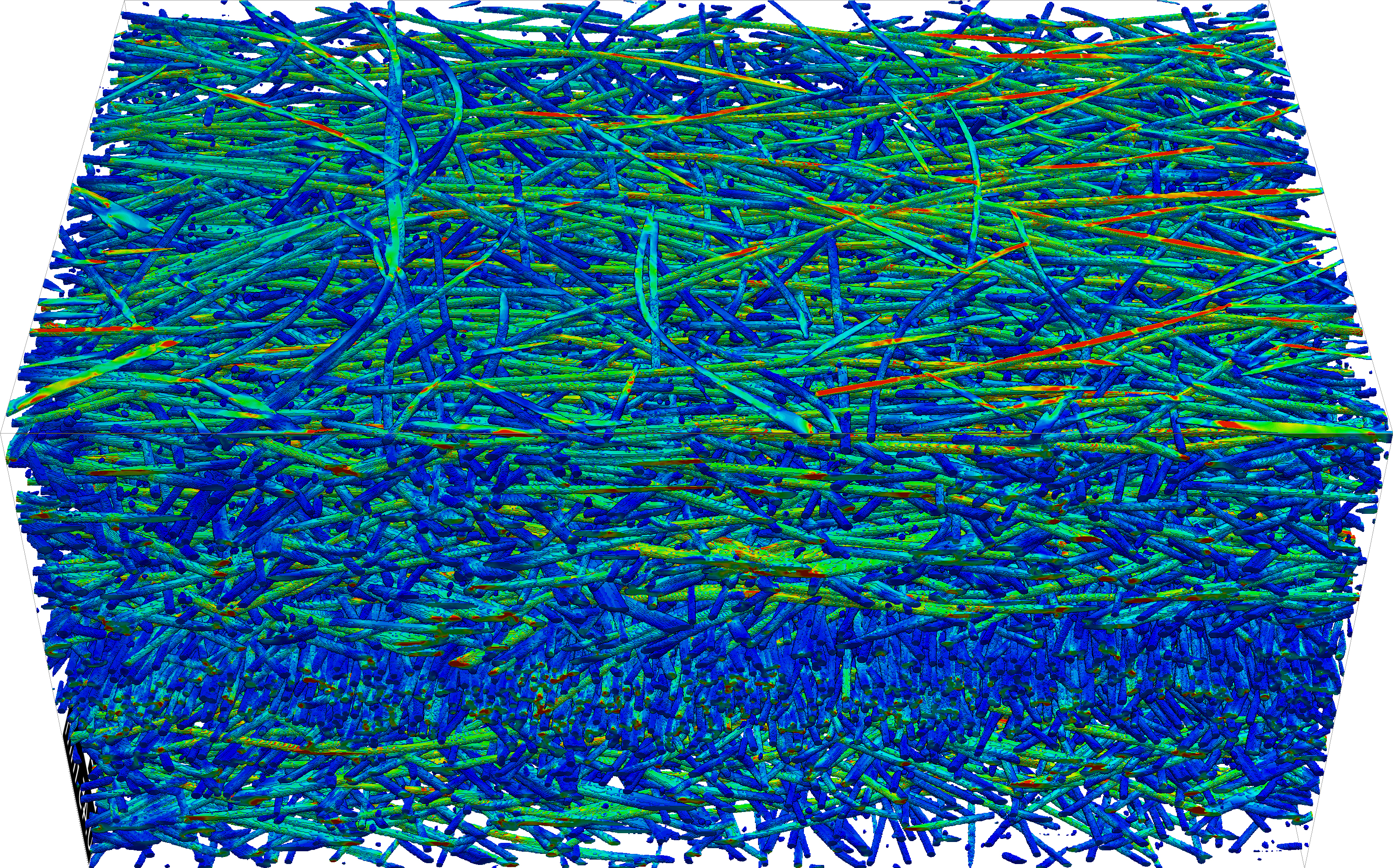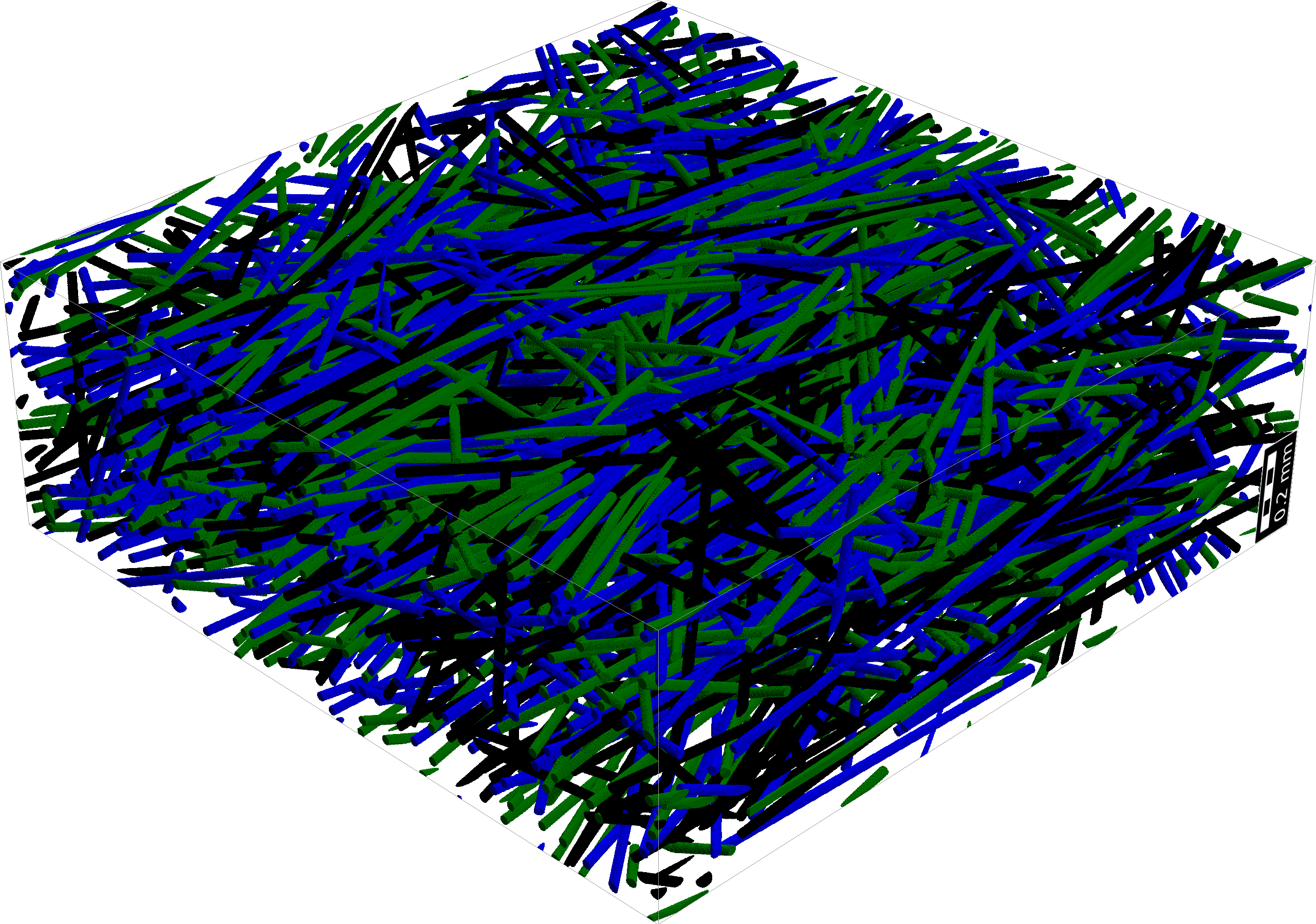Fiber reinforced plastics are lighter, stronger and more resilient than non-reinforced plastics and therefore, they meanwhile have become a preferred material class within the automotive industry. As far as safety-relevant components in the vehicle are concerned, it is particularly important to predict failure and damage. In this project, we support automotive companies with regard to the analysis and prediction of these mechanisms.
Fiber reinforced plastics (FRP) are often used in crash-relevant components due to their stiffness and strength properties. In crash applications, the industry prefers to use very long fibers, as the longer the fiber length, the higher the strength is. The fact that they are easy to process, e.g. by injection molding, is another major advantage of long fiber reinforced thermoplastics (LFT). However, modelling their material behavior is a challenging task, as, from a macroscopic point of view, the fibers and the matrix should not be seen individually but as a complete system. Their properties are very inhomogeneous, and non-linear effects must also be considered on the microscale. In this research project, we investigate the damage and failure mechanisms of LFT in the automotive industry.
Digital Twins of Composite Materials
Together with our partners from Fraunhofer IWM, we analyse damage and failure mechanisms of LFT on a realistic geometry both experimentally as well as using numerical simulations. With the FLUID solver, we first obtain a prediction of the orientation of the fibers in the whole component. Using CT images of several samples extracted at characteristic locations of the component, we validate that the prediction of the fiber orientation is indeed accurate. After having completely described the geometrical properties of the material, we are able to create digital twins of the composite.


